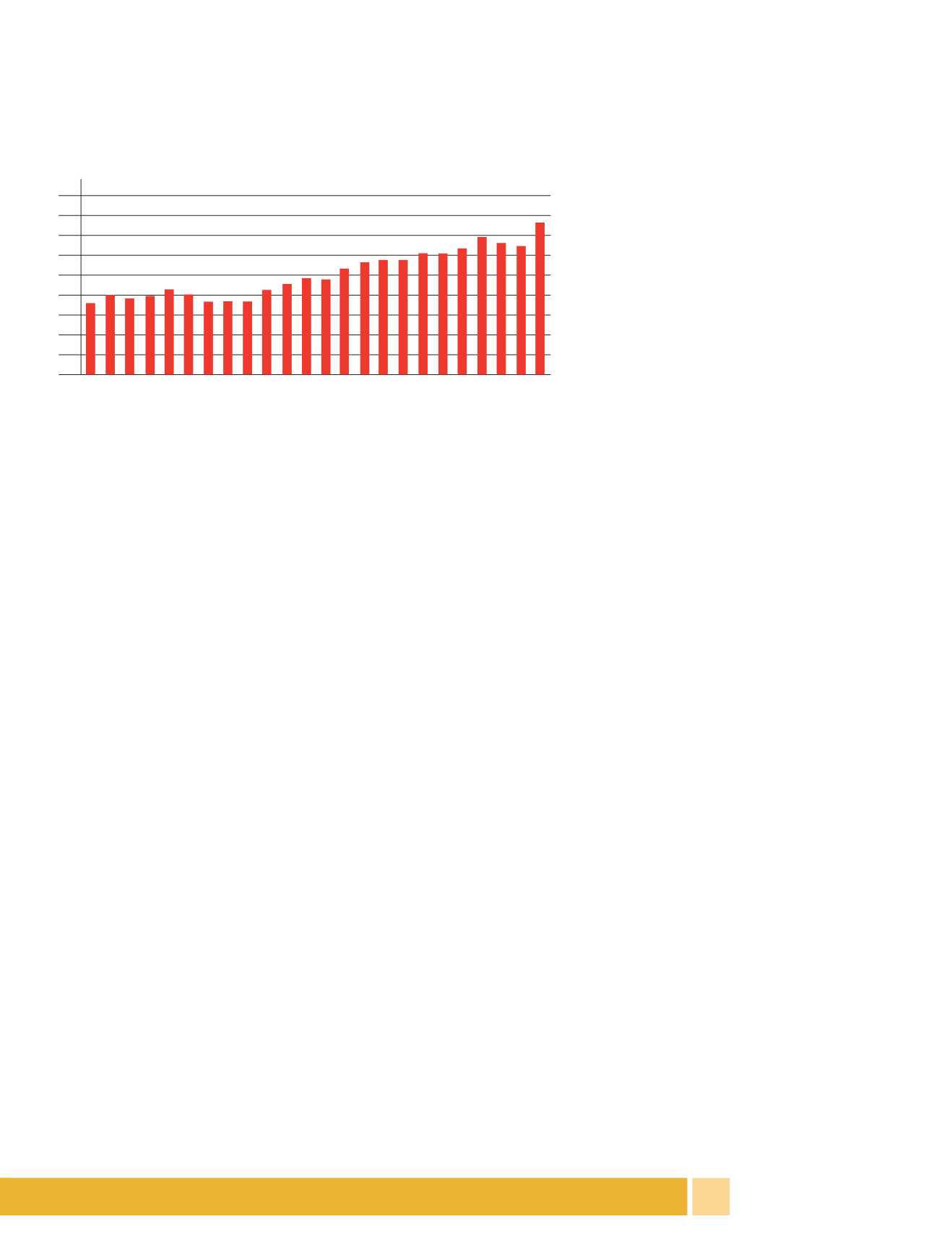

MAY 2016 •
PPB
• 67
business model, are too risky or don’t meet
the requirements of their inventory or
spend. So they ignore them. That’s where
the market almost corrects itself,” he says.
He also believes these Goliaths may
have increased efficiencies but they run the
risk of creating boring products because
those products are safe to buy, easy to
inventory and there’s a market for them.
Out of that environment a space is created
for smaller to mid-sized suppliers to come
in with unique products to round out the
product selection in specific categories. “I’m
very optimistic about where the industry
could go,” he says. “I see an industry of
huge players but I also see an industry of
innovative players because they come to
market with unique product offerings.” He
predicts these innovative companies will
come to market and be able to build suc-
cessful, high-margin and high-growth
companies that fill a product need that the
big suppliers can’t. “It’s not to say they can’t
fill it, but it runs against their business
model in terms of scale and efficiencies—
like fitting a square peg in a round hole.”
For many distributors, the potential
lack of product differentiation and product
innovation is the biggest fear in talking
about consolidation. “Without it, we’d be
competing [solely] on price,” says Graham.
“A supplier may not care about that but
from a distributor perspective, why do I
want to sell the same mug that 25,000 of
my closest competitors are selling? It’s a
race to the bottom. If that’s all I’m relying
on, my business is going to hit a ceiling
pretty quickly.”
He emphasizes the need now and in
the future for both small, unique compa-
nies and also large, turnkey operations.
“Innovation is what cuts through the
noise,” he adds.
BIC’s Bruno predicts fewer players but
larger players if the current scenario con-
tinues to play out. “Consolidation will con-
tinue until we get companies with signifi-
cant market shares,” he says. “The larger
they will be, the more market share they
will gain moving forward.” He also believes
consolidation will reinforce relationships
between large distributors and large suppli-
ers, and that these companies will continue
to become more powerful industry players.
Technology is also seen as a key com-
ponent in a competitive strategy, especially
among small industry players. “We, as an
industry, have to look at the fundamental
relationship between distributors and end
users, and distributors and suppliers, and
look for technology to offer better service,
better products and better solutions,” says
Fandos. “I’m bullish on the industry going
forward, if we can do that.” He adds that
those companies that don’t add value or
add diminishing value to the market are
likely to get squeezed out.
THE INDUSTRY’S POTENTIAL
FIVE-TO-10-YEAR SILHOUETTE
Fast-forwarding to the near future,
Krasovec is another who thinks the indus-
try will improve efficiency most through
the use of technology—especially data-
driven marketing where companies collect
and analyze the buying habits of customers
and market to them based on prior pur-
chases, and individual needs and interests.
“The end product isn’t much different but
the process to get it there is totally differ-
ent compared to five years ago, certainly 20
years ago, and it’s all related to technology.”
Given the industry’s recent history,
Graham thinks the time is ripe to see
some blockbuster acquisitions over the
next two years as the big companies get
bigger by combining resources. He believes
this leaves mid-sized companies in a pre-
carious position—not big enough to maxi-
mize efficiencies and scale but not small
enough to be nimble and innovative. He
characterizes this position as “caught in
the middle.”
“In the next two, five, 10 years we are
going to see the hollowing out of the mid-
dle—it’s a scary place to be,” says Graham,
whose distributorship can best be described
as a small-but-thriving company. “We
strive every day to create a business that is
not in the middle but in its own league.
You could be an average me-too $10-mil-
lion player or be a very differentiated $10-
million player.”
WILL THE INDUSTRY BE BETTER OFF?
“Thoughtful, controlled consolidation
will make us better off but if consolidation
means that in five years we’ll have 10 dis-
tributors and 10 suppliers, I don’t think
that’s good,” says Fandos. “We need
enough companies who bring energy, fresh
ideas and young people into the market.
You want a pipeline. What the market is
telling us with consolidation is it’s not as
efficient as it can be. If we can get more
efficient, and efficiency means safer and
45
40
35
30
25
20
15
10
5
0
Top 25 Promotional Products Supplier Sales as a
Percentage of Total Adjusted Industry Sales*
1991
1992
1993
1994
1995
1996
1997
1998
1999
2000
2001
2002
2003
2004
2005
2006
2007
2008
2009
2010
2011
2012
2013
2014
*Total industry sales were discounted 40 percent to arrive at total supplier sales.
















